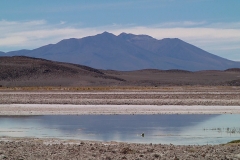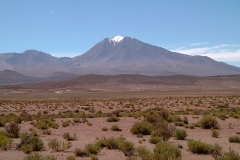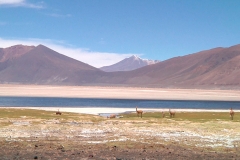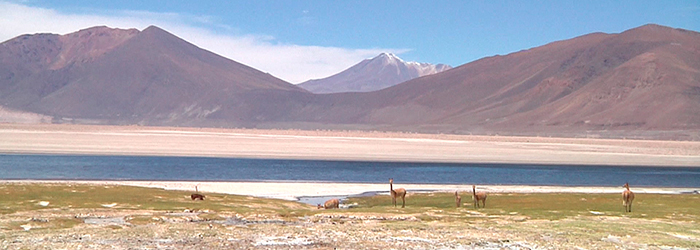History
The history of the indigenous population of Ollagüe and San Pedro Estación is linked to that of the neighboring Uyuni Salt Flat in Southwest Bolivia. Archeology in the region has determined that the area was first occupied around 8000 B.C. by hunting-gathering groups that made use of the ravines and salt flats. In the later pre-Hispanic period, between 900 and 1380 A.D., agriculture and herding became firmly established in the region. Today, groups in the area of Ollagüe and Alto Loa still have close cultural ties with the Altiplano, valleys and oases of the Circumpuna area and the Pacific coast. In the colonial period, the area was traversed by herders driving their livestock between the Antofagasta coast and the Altiplano, ultimately reaching the city of Potosí, in Bolivia. The zone was also home to early colonial pueblos de indios (“indian towns”) such as Amincha and Alota, created by order of Viceroy Toledo in the late 16th century.
The current presence of the Quechua in Ollagüe dates back to the sulfur mines on the Aucanquilcha and Ollagüe volcanoes, the borax mines on the salt flats, and the construction of the Antofagasta-to-Bolivia railway in 1888. These economic activities encouraged Quechuas to migrate from Bolivia to the region, where they joined the indigenous communities inhabiting the ancient settlements of Cosca, Amincha and Alota. The same thing occurred in the San Pedro River basin, where the sulfur mine of Línzor was a focal point of Quechua migration. This also led to the establishment of the Ojos de San Pedro settlement as a base for raising livestock and gathering plant resources such as llareta, which was extracted intensively for use as fuel in the towns and mines. Mining ended in the 1950s when demand for this substance dropped in the cities of Chuquicamata and Calama. The sulfur mines closed somewhat later, in 1992, and agriculture and livestock raising continued on a small scale only. Meanwhile, the town and grazing lands of Ojos de San Pedro were abandoned when the waters of the San Pedro River were channeled into pipelines and the lake began to disappear. A few Quechua families remained, subsisting along with their livestock near small water sources, but by the early 21st century the zone had been entirely depopulated.
For their part, the Quechua communities of Tarapacá base their indigenous identity on historic information confirming that the settlements that now inhabit were formerly Inca settlements, and that Mamiña, Miñe Miñe and Quipisca are ancient communities dating back to when these territories belonged to Peru, a time when the majority of the population was Quechua.






